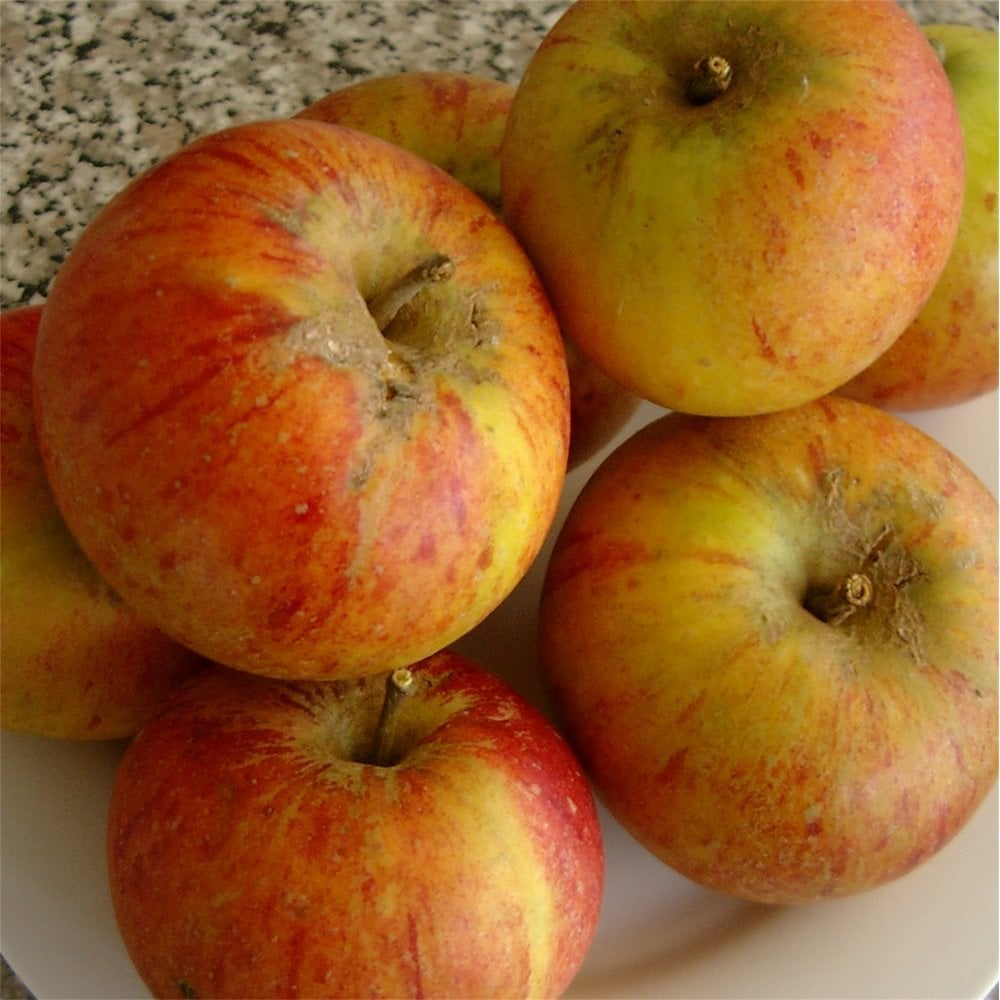Cox's Orange Pippin Apple Tree
Cox's Orange Pippin Apple Tree
Eating Apple Trees

Cox's Orange Pippin Apple Tree
Eating Apple Trees








Key features




Description
Cox's Orange Pippin is one of the UK's favouite apples and often known simply as 'Cox's'. The attractive red and yellow skin encases crisp and juicy aromatic flesh. It has a wonderfully complex flavour that is rich and sweet, with hints of cherry.
Introduced in 1825, Malus domestica 'Cox's Orange Pippin' came from the orchard of a retired British brewer with the name Cox. The apples are often seen on supermarket shelves, but taste far superior when home-grown. This classic heritage variety can be temperamental and isn't suited to Northern areas, but otherwise is an exceptional apple. To many, Cox's Orange Pippin is regarded as the quintessential English apple.
| Small shrubs (1-3) | Young trees & 4+ small shrubs | Select semi-mature trees & shrubs (1-4) | All other mature trees (any quantity) | |
|---|---|---|---|---|
| Mainland UK ex. Scottish Highlands | £10 | £12 | £35 | from £55 |
| Scottish Highlands & the Islands | From £30 | |||
| Outside Mainland UK | Currently we are unable to deliver outside of Mainland UK | |||
Product Details
Key features




Description
Cox's Orange Pippin is one of the UK's favouite apples and often known simply as 'Cox's'. The attractive red and yellow skin encases crisp and juicy aromatic flesh. It has a wonderfully complex flavour that...
Cox's Orange Pippin is one of the UK's favouite apples and often known simply as 'Cox's'. The attractive red and yellow skin encases crisp and juicy aromatic flesh. It has a wonderfully complex flavour that is rich and sweet, with hints of cherry.
Introduced in 1825, Malus domestica 'Cox's Orange Pippin' came from the orchard of a retired British brewer with the name Cox. The apples are often seen on supermarket shelves, but taste far superior when home-grown. This classic heritage variety can be temperamental and isn't suited to Northern areas, but otherwise is an exceptional apple. To many, Cox's Orange Pippin is regarded as the quintessential English apple.
Planting & Care
Delivery Information
| Small shrubs (1-3) | Young trees & 4+ small shrubs | Select semi-mature trees & shrubs (1-4) | All other mature trees (any quantity) | |
|---|---|---|---|---|
| Mainland UK ex. Scottish Highlands | £10 | £12 | £35 | from £55 |
| Scottish Highlands & the Islands | From £30 | |||
| Outside Mainland UK | Currently we are unable to deliver outside of Mainland UK | |||
MORE TO GROW YOUR GARDEN



































